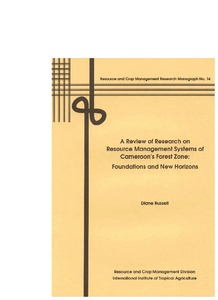| dc.contributor.author | Tian, G. |
| dc.contributor.author | Brussaard, Lijbert |
| dc.contributor.author | Kang, B.T. |
| dc.date.accessioned | 2019-12-04T11:25:01Z |
| dc.date.available | 2019-12-04T11:25:01Z |
| dc.date.issued | 1995 |
| dc.identifier.citation | Tian, G., Brussaard, L. & Kang, B.T. (1995). Breakdown of plant residues with contrasting chemical compositions under humid tropical conditions: effects of earthworms and millipedes. Soil Biology and Biochemistry, 27(3), 277-280. |
| dc.identifier.issn | 0030-0717 |
| dc.identifier.uri | https://hdl.handle.net/20.500.12478/4508 |
| dc.description.abstract | The effects of tropical earthworms (Eudrilus eugeniae) and millipedes (Spirostreptidae) on the breakdown of plant residues [Acioa (presently, Dactyladenia) barteri, Gliricidia sepium and Leucaena leucocephala prunings, maize (Zea mays) stover and rice (Oryza sativa) straw], with contrating chemical compositions, were studied in the field under humid tropical circumstances. Addition of earthworms significantly increased the breakdown of maize stover. Addition of millipedes significantly increased the breakdown of maize stover and rice straw. Combined addition of earthworms and millipedes generally resulted in greater plant residue breakdown, compared to that of a single group of fauna. During 10 weeks of exposure, earthworms and millipedes, on average, accounted for the breakdown of all plant residues by 10.4 and 28.4%, respectively. Millipedes and earthworms contributed more to the breakdown of plant residues with low quality (high C-to-N ratio, lignin and polyphenol contents) than to the degradation of those with high quality. It is concluded that fauna-enhanced breakdown of plant residues will have different effects on soil nutrient supply, depending on residue quality. |
| dc.language.iso | en |
| dc.subject | Earthworm |
| dc.subject | Millipedes |
| dc.subject | Maize |
| dc.title | Breakdown of plant residues with contrasting chemical compositions under humid tropical conditions: effects of earthworms and millipedes |
| dc.type | Journal Article |
| cg.contributor.affiliation | International Institute of Tropical Agriculture |
| cg.contributor.affiliation | Wageningen University and Research Centre |
| cg.contributor.affiliation | Research Institute for Agrobiology and Soil Fertility, Netherlands |
| cg.coverage.region | Africa |
| cg.coverage.region | West Africa |
| cg.coverage.country | Nigeria |
| cg.authorship.types | CGIAR and advanced research institute |
| cg.iitasubject | Maize |
| cg.iitasubject | Plant Health |
| cg.iitasubject | Climate Change |
| cg.accessibilitystatus | Limited Access |
| local.dspaceid | 100758 |
| cg.identifier.doi | https://doi.org/10.1016/0038-0717(94)00182-Z |

